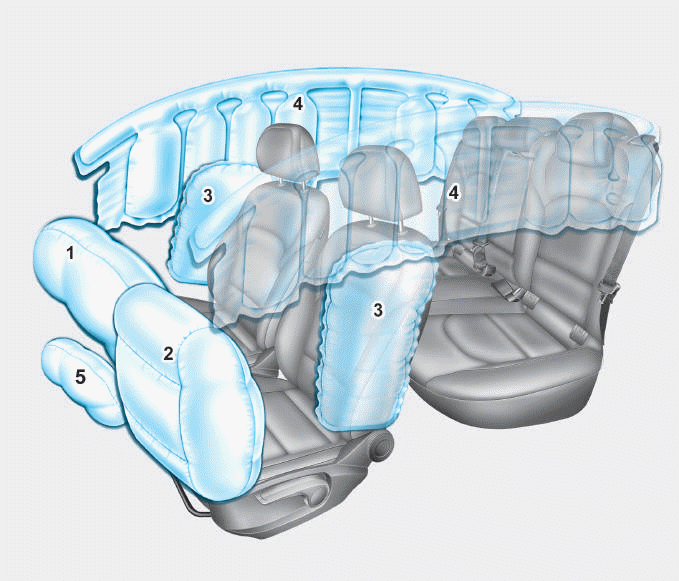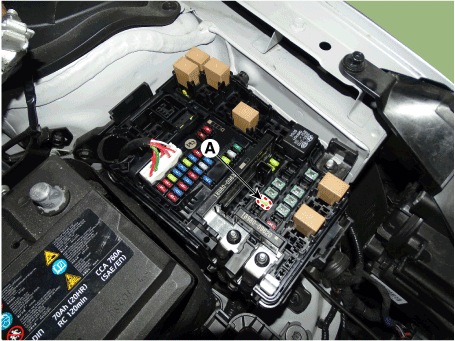Hyundai i-30: Fuel Delivery System / Release residual pressure in fuel line
Hyundai i30 (PD) 2018-2025 Service Manual / Engine Control / Fuel System / Fuel Delivery System / Release residual pressure in fuel line
| Release Residual Pressure in Fuel Line |
|
| 1. |
Turn the ignition switch OFF and disconnect the battery (-) cable.
|
| 2. |
Remove the fuel pump fuse (A).
|
| 3. |
Connect the battery (-) cable.
|
| 4. |
Start the engine and let idle, and then turn the ignition switch OFF
after the engine has stopped on its own.
|
| 5. |
Disconnect the battery (-) cable, and then install the fuel pump fuse
(A).
|
| 6. |
Connect the battery (-) cable.
|
| 7. |
Delete the diagnostic trouble code (DTC) related the fuel pump relay
with the diagnostic tool.
|
 Fuel pressure test
Fuel pressure test
Fuel Pressure Test
1.
Release the residual pressure in fuel line.
(Refer to Fuel Delivery System - "Release Residual Pressure in Fuel
Line")
•
When removing the fuel pump relay, the diagnostic trouble
code (DTC) will be occurred...
 Fuel Tank
Fuel Tank
Repair procedures
Removal
1.
Turn the ignition switch OFF and disconnect the battery (-) terminal.
2...
Other information:
Hyundai i30 (PD) 2018-2025 Service Manual: Front Wiper Motor
Components and components location Component Location 1. Cap 2. Nut 3. Wiper arm & blade 4. Rivet 5. Cowl top cover 6. Bolt 7. Wiper motor & linkage assembly 8. Wiper motor connector Repair procedures Removal 1...
Hyundai i30 (PD) 2018-2025 Service Manual: Specifications
Specifications Front Suspension Item Specification Suspension type Mac Pherson Strut Shock absorber Type Conventional valve Rear Suspension Item Specification Suspension type Torsion Beam Axle Shock absorber Type Monotube Wheel & Tire Item Specification Normal load Maximum load Front Rear Front Rear Wheel Aluminum 6...
Categories
- Manuals Home
- 3rd Generation i30 Owners Manual
- 3rd Generation i30 Service Manual
- Engine compartment
- Headlamp, static bending lamp, position lamp, turn signal lamp and daytime running light bulb replacement
- Battery replacement
- New on site
- Most important about car
Air bag - supplemental restraint system

1. Driver’s front air bag
2. Passenger’s front air bag
3. Side air bag*
4. Curtain air bag*
5. Knee air bag*
6. Front passenger air bag ON/OFF
switch
Copyright © 2025 www.hi30.net


